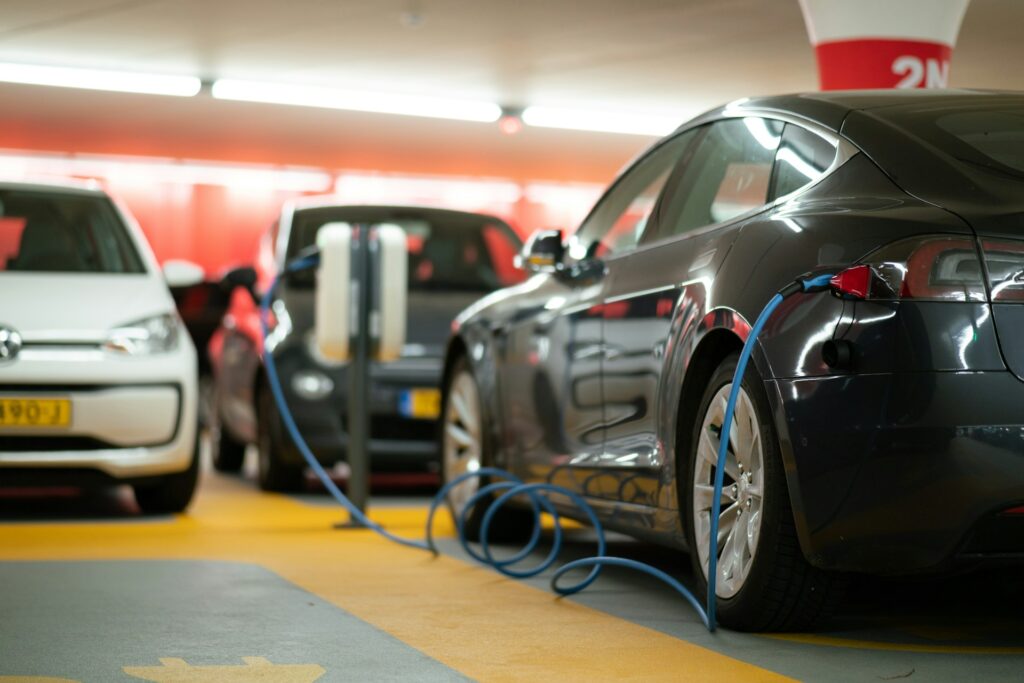Electric vehicles (EVs) are the wave of the future. They symbolize the world’s desire to decarbonize, a vital step toward curbing global warming and mitigating the worst effects of climate change. Everybody should win in a sustainable future, but the beneficiaries of the fossil-reliant present stand to lose material wealth and geopolitical influence when demand for crude oil dwindles.
The writing is on the wall for oil producers — and they know it. A greener planet means a less green bank account for them. However, even though EV sales are trending up, crude oil production has not decreased.
In 2022, the global output surged 5.4% — 315% higher than the 2010-2019 average. Coincidentally, the percentage of plug-in hybrid and battery EVs out of all new cars sold globally, led by Tesla, went from 3% in 2019 to 14% in 2022 — a 367% jump.
Desperation from oil-exporting countries and innovation can explain this phenomenon.

Energy interests recognize they are living on borrowed time. Some major oil-exporting countries are ill-prepared for a reality where oil no longer brings as much revenue as it used to. They capitalize on their reserves to influence how much consumers pay at the pump.
For example, the Organization of Petroleum Exporting Countries (OPEC) uses its market control to push gas prices high enough to maximize gains without causing a recession. A gallon of gas can become 24 cents more expensive for every $10 increase in crude oil’s cost. Therefore, OPEC can flood the market with supply to offset demand, stabilize energy prices, and disincentivize the permanent transition to alternative fuel sources.
This strategy allows them to delay the inevitable — widespread EV adoption. Oil producers must buy more time to diversify their economies before most of the world decouples from fossil fuels.
Qatar and Saudi Arabia have been aggressively investing in entertainment to revamp their international image, attract foreign private investors, and create jobs for locals, following in the footsteps of the United Arab Emirates. The UAE was once heavily reliant on energy exports, but Dubai’s success story has demonstrated a Middle Eastern city can unshackle itself from oil and remain prosperous. Tourism, construction, manufacturing, and services account for a significant portion of the Gulf Tiger’s economy.
In recent years, the two monarchies have bid to host various high-profile sports events. Qatar hosted the 2022 FIFA World Cup, spending about $500 million weekly leading up to the event and approximately more than $200 billion overall. Saudi Arabia created LIV Golf in 2021 and has also made moves to control the PGA Tour. The kingdom is also the sole contender for the 2034 FIFA World Cup.

Moreover, the world is far from running out of this dirty commodity. It is a finite resource, but modern technology has resulted in more discoveries, like when OMV Petroleum found 30 million barrels of oil equivalent of recoverable resources in Romania. In 2022, the world tallied 1.56 trillion barrels of proven oil reserves. Leading the charge is the United States.
The U.S. overtook Russia and Saudi Arabia in 2018 and has never looked back. One of the catalysts for this phenomenon is the increased use of horizontal drilling and hydraulic fracking techniques. Innovations have allowed Uncle Sam to drill more efficiently and economically, getting more juice from the ground than ever with fewer rigs.
Auto and energy industry observers believe EV sales growth will cause oil demand to peak as early as 2027, and the interest in this fossil fuel will go downhill from then on. Such a prediction does not faze OPEC, for its member countries know how valuable its commodity is to the world. Consumer theory proves the oil cartel is right.
Gas-powered cars remain popular because they satisfy most people’s preferences and budget constraints. Tesla and other EV manufacturers are striving to offset the traditional automakers’ competitive advantages and offer better value propositions to consumers. Until then, the fossil age will not end, and crude oil production will continue to reach new highs.

Stay tuned for constant Tesla updates, follow us on:
Google News | Flipboard | RSS (Feedly).
Related
- Tesla (TSLA) Q2 2024 Earnings Call: Elon Musk talks about Robotaxi, FSD, Optimus, Roadster, Dojo, and the next-gen affordable EV
- Tesla begins the rollout of FSD v12.5 to employees and select external testers (first impressions)
- Tesla (TSLA) wins a multi-billion dollar Megapack deal for battery energy projects in California and Texas
- Tesla (TSLA) raises prices of its flagship Model S and Model X EVs in the US and Canada
- Tesla Model Y RWD owners can unlock 50 miles of extra range for $1,600 via an OTA update
- Elon Musk explains the reason behind the delay of the Robotaxi unveiling event








